Something went wrong!
Hang in there while we get back on track
Best attractions in Italy
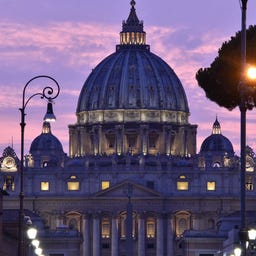
The Vatican is – in the heart of Rome – the smallest independent state in the world and is home to some of the world's most beautiful masterpieces. A visit is among the top highlights in all of Europe. Both St. Peter's Basilica with its monumental dome and the Sistine Chapel, featuring Michelangelo's breathtaking frescoes, attract millions of visitors each year.
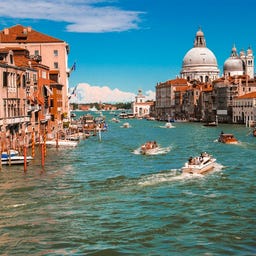
The Grand Canal is Venice's main artery, gracefully winding through the city in a large S-shape. The palaces along its banks, such as the Ca' d'Oro and the Palazzo Venier dei Leoni, are reminders of the Venetian Republic's former grandeur. Serving as the heart of Venice, the Grand Canal links many of the city's most significant landmarks.
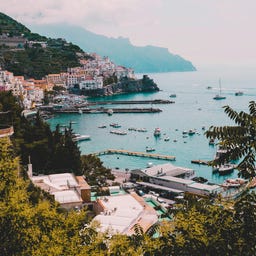
The Amalfi Coast is a spectacular stretch of coastline and is among the most celebrated travel destinations in Italy. Majestic, lush mountains plunge into the azure Tyrrhenian Sea, creating a captivating scene of rugged cliffs and charming houses that boldly perch on the edge.
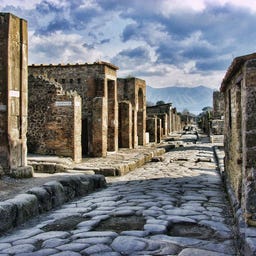
Pompeii is one of the most fascinating ancient cities in the world, offering a unique insight into the life of the ancient Romans. Preserved under a thick layer of ash from the eruption of Mount Vesuvius in 79 AD, a visit to Pompeii feels like a journey through time.
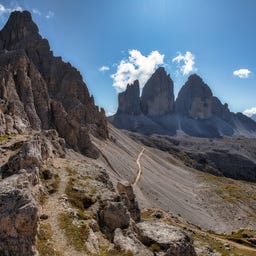
The Dolomites, a mountainous area in northern Italy, offer breathtaking panoramas with dramatic rock formations and challenging hiking trails. These impressive limestone peaks span a variety of valleys and summits, providing spectacular views, especially at sunrise and sunset when they glow in vibrant colors.
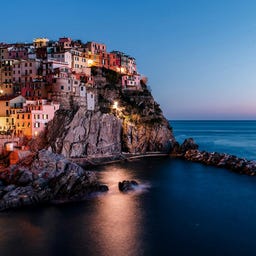
The Cinque Terre, a picturesque stretch of coastline along the Italian Riviera, comprises five unique villages carved into steep cliffs. Hiking trails link these colorful settlements, offering breathtaking views of the turquoise Mediterranean Sea and terraced vineyards. Each town has its own special charm and unforgettable vistas.

Sicily is a place full of fascinating wonders, from majestic ancient ruins to breathtaking natural landscapes. Particularly impressive is Mount Etna, Europe's most active volcano, whose massive eruptions and lava landscapes offer a unique natural spectacle. Another highlight is the Valley of the Temples in Agrigento, where well-preserved Greek temples like the Temple of Concordia from the 5th century BC stand proudly. Additionally, the picturesque beaches of San Vito Lo Capo with their turquoise waters and fine sand are perfect for relaxation.

The Leaning Tower of Pisa, with its distinctive tilt, is one of the world's most famous landmarks. Construction began in 1173, but by the time the third floor was added in 1185, the tower had already started to lean due to the soft, sandy ground. Originally intended as a freestanding bell tower for the Cathedral of Pisa, its completion was delayed by construction pauses and adjustments, finally finishing in 1372. Today, the tower tilts at about four degrees and draws millions of visitors each year who brave its 294 steps.

Santa Maria del Fiore is a masterpiece of Renaissance art and architecture. With its magnificent red-tiled dome designed by Brunelleschi and a facade that delights in shades of pink, white, and green marble, the Duomo commands the city's landscape. Build between 1296 and 1436, it claims the title of the third-largest cathedral in Europe, surpassed only by St. Peter’s in Rome and the Duomo in Milan. Inside, the cathedral shelters artistic treasures from Michelangelo to Donatello, alongside stunning frescoes.
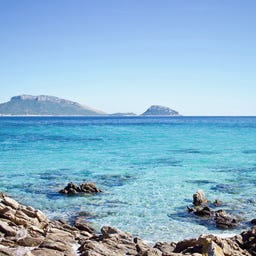
Sardinia boasts over 1,800 kilometers of coastline, offering some of the most stunning beaches in the Mediterranean: from the emerald-green, exclusive Costa Smeralda to the tranquil Spiaggia di Chia with its dunes and flamingos. Whether snorkeling in crystal-clear waters, taking a boat tour to the remote beaches of the Maddalena Islands, or windsurfing in Chia, the options are as diverse as the sea’s vibrant colors.

In Alberobello, you'll discover an entire district filled with enchanting Trulli. These distinctive limestone buildings with their conical roofs, adorn the Apulian landscape and are often decorated with mysterious symbols. Strolling through the streets of this UNESCO World Heritage site is a highlight of any visit to Apulia.
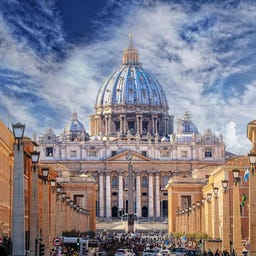
St. Peter's Basilica, the largest church in the world and the heart of the Vatican, impresses with its masterful Italian Renaissance art. The majestic dome, designed by Michelangelo, rises high above the city and offers spectacular views of Rome - a climb is therefore a must. Inside, the basilica impresses with its magnificent marble interior and artistic statues, including the moving Pietà. A highlight is the visit to the necropolis beneath St. Peter's Basilica, where the tomb of the Apostle Peter lies.
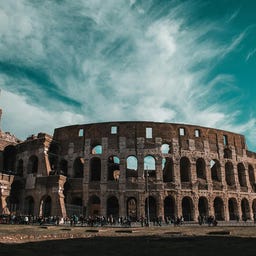
The Colosseum, an iconic symbol of ancient Rome's grandeur, stands as a remarkable testament to the architectural and engineering prowess of the Roman Empire. This colossal amphitheater, once the site of heart-stopping gladiator combats and ferocious battles with wild beasts, draws the gaze of over 7 million visitors each year.
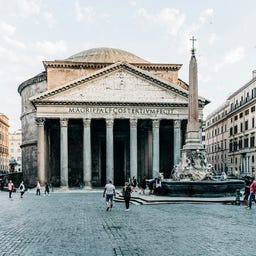
The 2000-year old Pantheon, a masterpiece of ancient architecture, stands as a monumental tribute to Roman engineering and artistry. This iconic structure was initially conceived as a temple to the 7 classical gods, and was later consecrated as a Christian Church. Walking through its doors, one is immediately struck by the vast, open space of the rotunda, topped by the largest unreinforced concrete dome in the world. At the dome's zenith is the oculus, a 9-meter-wide aperture that floods the interior with natural light, creating a connection between the earth and the heavens.
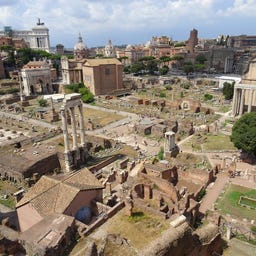
A visit to this impressive open-air museum is an absolute must for any visitor to Rome. Nestled between the Palatine and Capitoline Hills, it offers insight into the heyday of Roman civilization. Here, you can stroll through the remnants of majestic temples, basilicas, and triumphal arches that once formed the center of political and religious life.
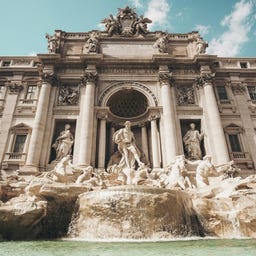
The Trevi Fountain, a masterful baroque marvel, is not just Rome's largest but also its most breathtaking fountain. Amid the hustle and bustle of the city, it stands as a grandiose display of mythical figures and cascading waters, captivating all who come to toss a coin and embrace its legend.
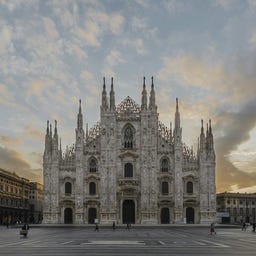
The Gothic Milan Cathedral is a true masterpiece and the city's most iconic landmark. With a construction period spanning nearly 600 years, from 1386 to 1965, it is even the largest cathedral in Italy. Be sure to visit the rooftop for stunning panoramic views over Milan — standing up there among the delicate sculptures is an incredible experience.
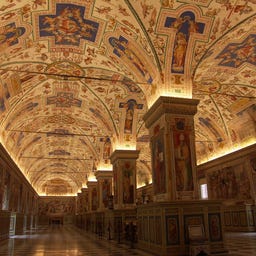
The Vatican Museums rank among the most spectacular and largest museum complexes in the world. Within its 26 museums and 7km (approximately 4.3 miles) of halls and galleries, an impressive collection of over 70,000 works is preserved, of which 20,000 are on display. From the Sistine Chapel, adorned with Michelangelo's breathtaking frescoes, to the intricately detailed Raphael Rooms and the aesthetically pleasing Spiral Staircase – the Museums offer a unique journey through the history of art and culture.

This world class art gallery houses the largest collection of Italian Renaissance art in the world and is a premier destination for art enthusiasts. Located in the magnificent Palazzo degli Uffizi in over 100 rooms, masterpieces by Botticelli, Michelangelo, and Leonardo da Vinci astonish millions of visitors every year. The Medici family's legacy is omnipresent, their collection a gift to Florence ensuring the city's eternal connection to the Renaissance.
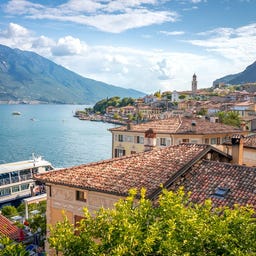
Lake Garda, Italy’s largest lake, is a paradise for both nature lovers and culture enthusiasts. Surrounded by majestic mountains and serene shores, the lake offers a rich variety of activities. Highlights include the Scaligero Castle in Sirmione, a picturesque medieval fortress on a peninsula, and Malcesine, where a cable car takes you up to Monte Baldo. The charming town of Limone sul Garda, with its lemon groves, and the watersports hub of Riva del Garda also draw visitors. Here, you can immerse yourself in the region's rich history while soaking in its stunning landscapes.
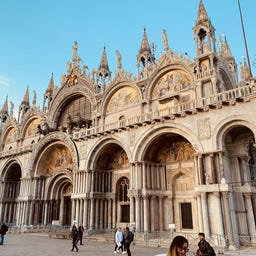
The basilica is a masterpiece of Byzantine architecture and Venice's top attraction. Known as the Church of Gold, it dazzles approximately 3 million visitors each year with over 8,000 square meters of golden mosaics and unique artworks depicting biblical scenes. A highlight is the magnificent Pala d'Oro, an altarpiece adorned with over 1,900 pearls and gemstones.
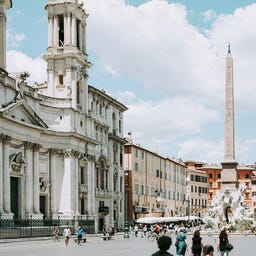
As the first rays of sun touch the cobblestones, Rome's most beloved and picturesque square awakens with its fountains casting soft shadows. By day, it transforms into a vibrant hub, buzzing with the energy of bustling cafés, street performers, and portrait artists. The original piazza was constructed atop the 30,000-seat stadium di Domiziano in 86 CE. One can still access the ruins for a ticket of €9.
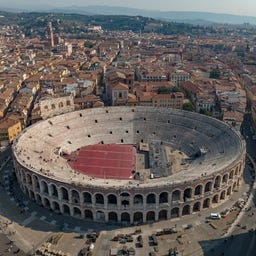
The Arena di Verona, one of the best-preserved Roman amphitheaters, draws thousands of visitors each year. Built in 30 AD, it stands majestically over Piazza Bra, impressing with its grandeur and the distinctive pink marble that takes on a magical glow in Verona’s soft light.
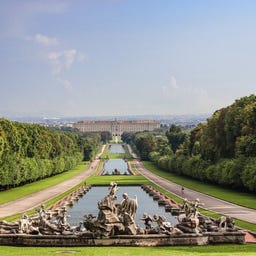
The Royal Palace, a UNESCO World Heritage site, is Italy's monumental homage to the Baroque era and one of the largest palace complexes in Europe. Commissioned by Charles VII of Naples in the 18th century to surpass the grandeur of Versailles, the extravagant palace boasts 1,200 rooms, 1,790 windows, and 34 staircases along its 250-meter-long façade.
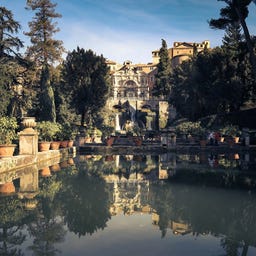
The Villa d'Este, built in the 16th century, is a Renaissance masterpiece of architecture and garden design. Commissioned by Cardinal Ippolito II d'Este and led by architect Pirro Ligorio, the villa is famous for its over 500 fountains, operated by an ingenious hydraulic system without modern pumps. The terraced gardens are particularly noteworthy, featuring cascades, water features, and artistic sculptures that beautifully blend nature and art.
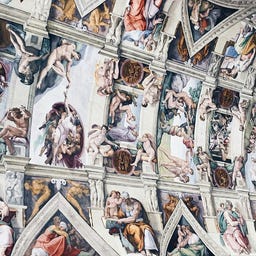
The Sistine Chapel is a pinnacle of Renaissance art and a must-visit for anyone stepping into the Vatican Museums. It's famed for Michelangelo's iconic ceiling frescoes and The Last Judgment. The sheer scale and artistic mastery of Michelangelo's work make it an unforgettable experience.
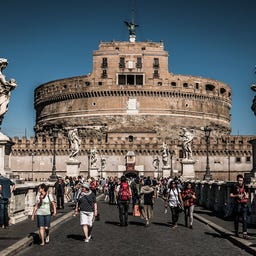
Castel Sant'Angelo, originally built as a mausoleum for Emperor Hadrian, is now a fascinating museum. It got its name from a vision of Pope Gregory I in 590 AD: the Archangel Michael appeared to him, sheathed his sword, and thus announced the end of the plague. Inside the castle, you can admire the magnificent Sala Paolina, with frescoes depicting episodes from the life of Alexander the Great.

Val d'Orcia, a picturesque region in southern Tuscany extends from the hills south of Siena to the slopes of Monte Amiata. Recognized as a UNESCO World Heritage site for its refined beauty, the valley is famous for its iconic cypress-lined vistas and clay hills. Within its bounds lie historic gems like Pienza, Radicofani, Montalcino, and Montepulciano.

The highlight of this art museum is Michelangelo's David, his most challenging project. Carved from a single, imperfect block of marble, this iconic statue captivates with its intricate details and lifelike expressions.

The Cathedral of Siena is undoubtedly one of Italy’s most impressive examples of Romanesque-Gothic architecture, rivaling, and perhaps even surpassing, the famed Cathedral of Florence in its splendor.

The Abbey of Monte Cassino is very impressive and definitely worth a detour when traveling from Rome to Naples. Located on a mountain near Cassino, it features a magnificent cathedral, a small museum, and an elegant Renaissance cloister with stunning views —perfect for photos!
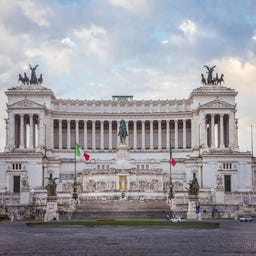
The monumental Victor Emmanuel II Monument in Rome, also known as the Vittoriano, is a magnificent example of Italian architecture. It was built between 1885 and 1925 to honor the first king of a united Italy. The structure dominates Piazza Venezia with its impressive size and white marble construction. The Altar of the Fatherland, located inside, is a significant memorial for the Unknown Soldier and attracts thousands of visitors annually. The panoramic view from the terrace over the historic center of Rome is outstanding.
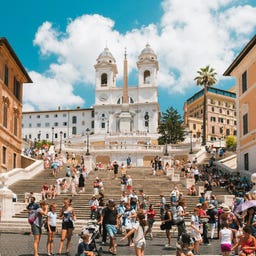
The Spanish Steps, a monumental staircase with 138 steps, connect Piazza di Spagna with the church of Trinità dei Monti. Built in 1725, it is an outstanding example of Baroque architecture and a popular meeting place for both locals and tourists. Especially in spring, when adorned with blooming azaleas, the staircase offers a stunning sight.

The Palazzo Vecchio, with its imposing structure and commanding presence, is one of Florence's top sights. This historic building serves as the city's town hall and casts its gaze over the bustling Piazza della Signoria, an iconic square adorned with a replica of Michelangelo's David.

Spanning the Arno River in Florence with its medieval stone arches, the Ponte Vecchio is adorned with a vibrant trail of jewellery and souvenir shops. The iconic bridge connects the city's cultural heartbeats:
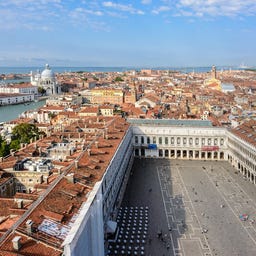
The Piazza San Marco is one of the most famous squares in the world - and rightly so. This grand piazza is surrounded by some of the most beautiful attractions of Venice, from the lavish St. Mark’s Basilica and towering Campanile to the Doge’s Palace.
As you step onto its expansive grounds, you’re walking the same stones that have hosted centuries of Venetian history, from grand processions to intimate café gatherings. Here, amid the cooing of pigeons and the distant serenade of a gondolier, you can truly feel the spirit of Venice.
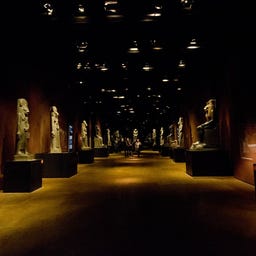
The Museo Egizio in Turin is one of the world's most important collections of Egyptian artifacts and the second-largest museum of its kind outside Egypt. With over 37,000 exhibits, including mummies, papyrus scrolls, and precious burial goods, it offers a fascinating journey through 4,000 years of history, art, and archaeology.
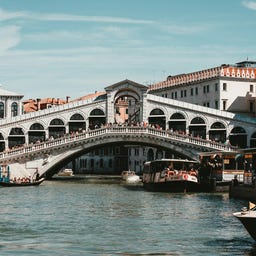
The Rialto Bridge, constructed in 1591, stands as one of Venice's most iconic landmarks. This magnificent stone bridge, adorned with elegant arches and intricate details, offers beautiful views of the Grand Canal. At the time of its construction, its bold architecture was considered so audacious that some architects predicted it would eventually collapse.

As you wander through the cobbled streets of San Gimignano, there’s one spot you can’t miss: the Torre Grossa. Rising 54 meters, it’s the tallest tower in the city and has stood as a symbol of power and wealth since the 14th century. The climb - 218 steps, no elevator - may be challenging, but the reward is a stunning 360-degree view of Tuscany’s rolling vineyards and the sea of terracotta rooftops below.

In the heart of Pienza stands the Palazzo Piccolomini, one of the earliest examples of Renaissance architecture, commissioned by Pope Pius II in 1459 from Bernardo Rossellino as part of his ideal city. This three-story palace, made of finely worked stone, impresses with its square layout, a central courtyard, and a terraced garden that offers a stunning view over the Val d'Orcia. Inspired by the Florentine Palazzo Rucellai, this building, now used as a museum, combines elegant architecture with Renaissance garden design, featuring rectangular flower beds, a fountain, and an octagonal fountain adorned with the Piccolomini coat of arms.
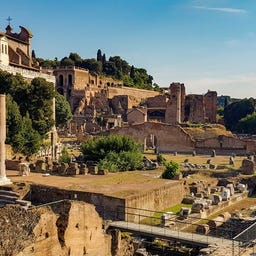
The Palatine Hill is the legendary site where the cave of Romulus and Remus, who were found by the she-wolf, was located, and it is one of Rome's most significant archaeological sites. As Rome developed, the hill became a coveted residential area for the elite, including Emperor Augustus, whose house is still one of the best-preserved sites there.
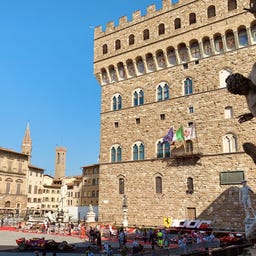
The Piazza della Signoria is the historic and vibrant heart of Florence, located in front of the imposing Palazzo Vecchio. This bustling square houses an impressive collection of statues and monuments, resembling an open-air museum that attracts tourists from around the world. A visit to the piazza is essential for anyone visiting Florence.
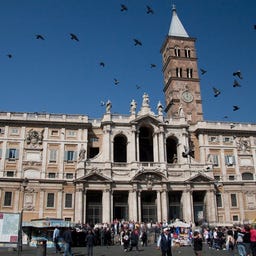
The Basilica of Santa Maria Maggiore is renowned for its stunning 5th-century mosaics depicting scenes from the Old Testament. As one of Rome’s four major papal basilicas, it impresses with its baroque facade (18th century) and opulent interiors.
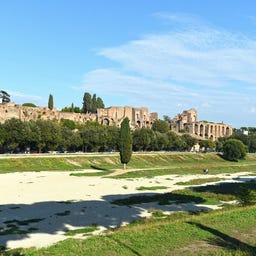
The Circus Maximus, once the largest arena of ancient Rome, was the site of spectacular chariot races and grand events. The remains of this gigantic stadium, which could accommodate up to 250,000 spectators, testify to its monumental size. On the steps that once held the audience, you have an impressive view of the surroundings and get a sense of Roman history. It is a perfect place to relax and take cool photos.
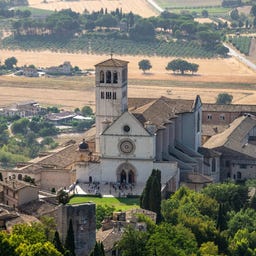
The Basilica of San Francesco in Assisi, perched on a hill with stunning views over Umbria, is one of the world's most important pilgrimage sites and a UNESCO World Heritage Site since 2000. Construction began in 1228, just two days after the canonization of Francis of Assisi, and the basilica was consecrated in 1253. It consists of two main levels:
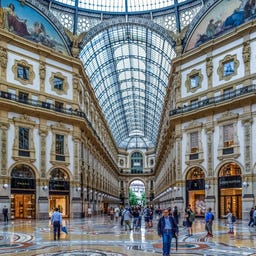
The Galleria Vittorio Emanuele II is Italy's oldest shopping gallery and a significant landmark in Milan. The magnificent glass roofs and mosaic floors make every visit an experience. Enjoy an espresso in one of the elegant cafes or shop in the luxury stores.
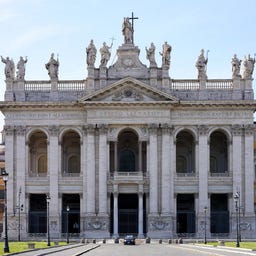
The Archbasilica of St. John Lateran, or just the Lateran Basilica, is the oldest and highest-ranking of the four major papal basilicas. Not only that, it was founded in 324 AD by Emperor Constantine the Great, making it the very first Christian basilica ever! Its remarkable history and artistic treasures make it a must-see for anyone interested in early Christian architecture and history.
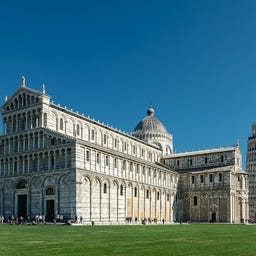
The Cathedral of Pisa, the oldest structure on the Piazza dei Miracoli, was begun in 1064 outside the city's walls to showcase Pisa's confidence against potential attacks. The construction was funded by war booty, notably from a victorious raid on the Saracens in Palermo. This cathedral, along with St. Mark's Basilica, is one of the first monumental buildings of medieval Italy, making it particularly significant in art history. It was built either before or around the same time as the Venetian basilica, during a period when both powerful maritime republics were vying to assert their cultural dominance. The origins of the Persian and Byzantine influences in its design remain unclear.
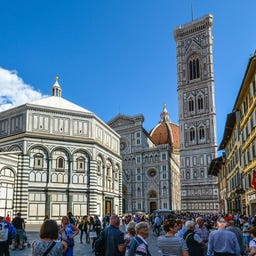
When visiting Florence, a stop at Piazza del Duomo is an absolute must – the heart of the city and a place filled with unique architecture. Dominating the square is the Cathedral of Santa Maria del Fiore, a masterpiece of Gothic architecture, whose iconic dome by Brunelleschi defines Florence's skyline.
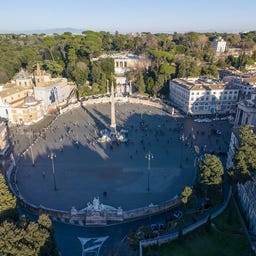
The Piazza is one of the largest squares in Rome (at the north gate of the city) and is known for its impressive Egyptian obelisk, the accompanying fountains, and the twin churches Santa Maria dei Miracoli and Santa Maria in Montesanto.
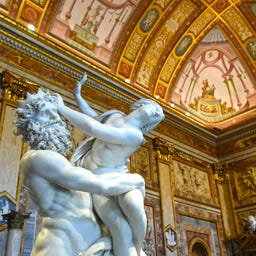
The Galleria Borghese is a true paradise for art lovers. The elegant Villa Borghese, surrounded by lush gardens, was built in 1607 by Cardinal Scipione Borghese. Today, it houses a world-famous art museum with an impressive collection of masterpieces.
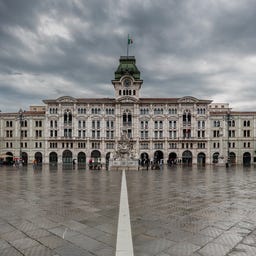
Visiting the main square, the largest square in Europe with open access to the sea, is a must in Trieste. Don't be surprised if the architecture reminds you of Vienna. Trieste was part of Austria until 1918, and the elegant palaces are built in the same architectural style as the Viennese Ringstrasse.
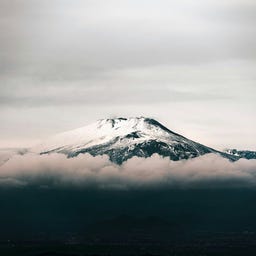
Everything that nature has that is great, everything that is pleasant, everything that is terrible, can be compared to Etna and Etna cannot be compared to anything. (Dominique Vivand Denon, 1788)
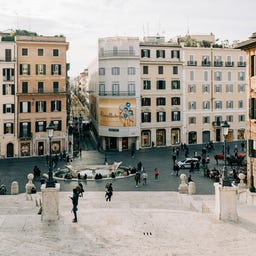
Located at the famous Spanish Steps with its 136 steps, Piazza di Spagna is one of the liveliest squares in Rome. The butterfly-shaped square gets its name from the Spanish Embassy Palace, which has represented the Holy See here since the 17th century.
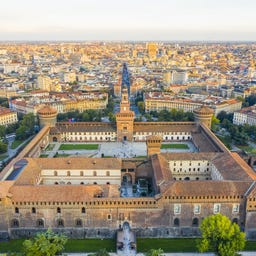
In the heart of Milan stands the mighty fortress from the 15th century. Once the seat of the powerful Sforza family, it now houses museums with valuable art treasures, including works by Michelangelo, Filippo Lippi, and Leonardo da Vinci. A walk through the courtyards and visiting the museums offers a fascinating insight into the Renaissance.
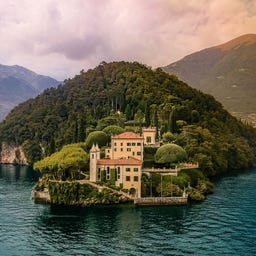
Lake Como, framed by the foothills of the Alps, is famous not only for its picturesque scenery but also as a retreat for international celebrities. George Clooney brought the spotlight to the region with his Villa Oleandra, and stars like Donatella Versace and Madonna regularly spend their summers here.
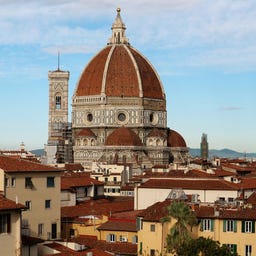
The largest masonry dome in the world has been towering over the Cathedral of Santa Maria del Fiore in Florence since the 15th century and is considered one of the most important buildings in Europe since Roman times. With a height of 116 meters and a weight of 37,000 tons, Filippo Brunelleschi created an architectural masterpiece here between 1420 and 1436, which did not rely on traditional wooden scaffolding. The construction, consisting of two shells, impresses not only with its perfect proportions based on the Golden Ratio but also with the magnificent frescoes of the Last Judgment inside.
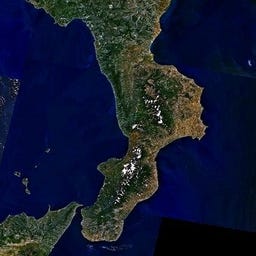
In Calabria's untouched landscape, 780 kilometers of coastline stretch along the Tyrrhenian and Ionian Seas, framed by three impressive national parks - Pollino, Sila, and Aspromonte.
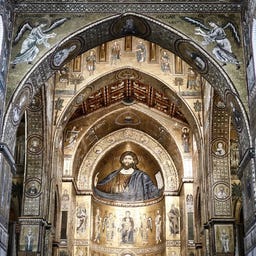
Monreale Cathedral, considered the most magnificent example of Arab-Norman architecture in Sicily, dazzles visitors with its intricate gold mosaics. These vast mosaics, requiring over 1800 kg of gold, cover over 6,500 square meters and presents 42 biblical tales in stunning detail. Only an hour's bus ride from Palermo, this UNESCO World Heritage Site is a must-see in Palermo.
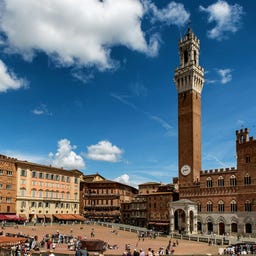
The heart of Siena enchants with its unique shell-shaped design and rich history. This iconic square, laid out in the 14th century, is best known as the site of the "Palio di Siena" horse race, held twice a year. You might recognize it from a James Bond movie, where Bond famously races across Siena's rooftops!

The Basilica of Saint Anthony in Padua is one of Northern Italy's most significant spiritual and architectural landmarks. Blending Romanesque, Gothic, and Byzantine elements, this extraordinary church captivates with its impressive facade and minaret-like bell towers.
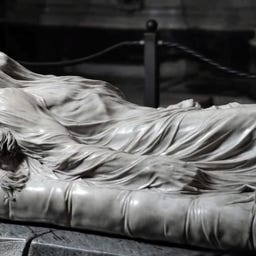
The chapel Sansevero is one of the most impressive masterpieces that you can and should see in Naples. The absolute highlights are the exquisite marble sculptures, such as the Veiled Christ by Giuseppe Sanmartino, which captures the appearance of a translucent shroud in marble with astounding precision.
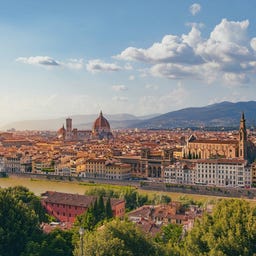
Piazzale Michelangelo is undeniably one of the most popular viewpoints in Florence. Perched on a hill south of the Arno, it offers stunning panoramic views of the city, including the Duomo, Ponte Vecchio, and the Tuscan hills. At sunset, crowds gather to witness the Renaissance city bathed in golden light.
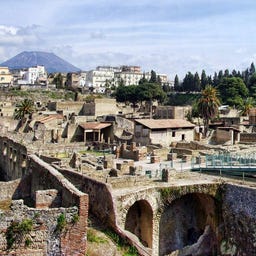
In ancient Herculaneum, which legend says was founded by Hercules in the 12th century BC, you will find one of the best-preserved Roman archaeological sites in the world. The prosperous coastal city was buried by the eruption of Vesuvius in AD 79, with volcanic ash preserving organic materials like wood and food through rapid carbonization.
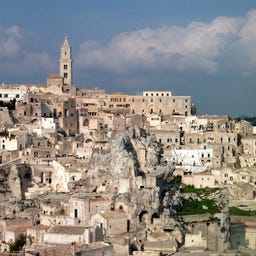
The Sassi di Matera are two districts of the Italian city of Matera, well-known for their ancient cave dwellings inhabited since over 7,000 (!) years. Called once the ‘Shame of Italy it is, after significant investment, now a popular tourist destination. It was in 2019 the European Capital of Culture and the location of Mel Gibson's "Passion of Christ" and the latest Bond film.
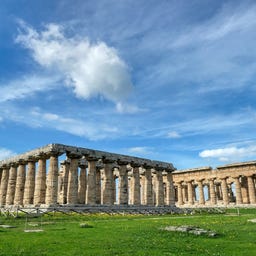
The ancient city of Paestum lies about 100 km south of Naples and is an impressive testament to the Greek colonization of Italy. Founded in 600 BC and taken over by the Romans in 273 BC, Paestum today houses three of the best-preserved Doric temples in the world: the temples of Hera and Athena.
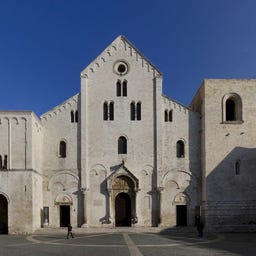
The Basilica of San Nicola, built in the style of Apulian Romanesque, is one of the most important sights in Bari and is an important pilgrimage site for both Catholic and Orthodox Christians. Constructed between 1087 and 1197, it was the first of its kind and served as a model for other religious buildings in the region. The basilica was built to house the relics of Saint Nicholas, which, according to legend, were stolen in 1087 from Myra (in present-day Turkey) by fishermen.
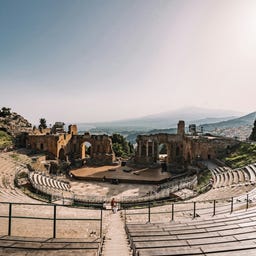
The ancient Greek theatre of Taormina, located just a five-minute walk from Villa Comunale on 1, Via del Teatro Greco, is the town's crowning jewel and a must-see attraction for any visitor. Founded in the 3rd century BC, it stands out not just for its historical significance as the second largest Greek theatre in Sicily but also for the breathtaking views it offers of Mount Etna and the Ionian Sea.
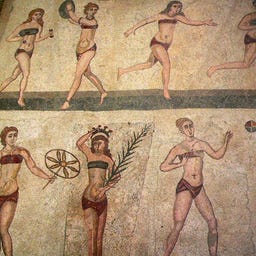
The Roman villa near Piazza Armerina is renowned for its stunning collection of well-preserved mosaics that vividly capture life in the Roman Empire. Built in the 4th century AD, the villa boasts about 3,500 square meters of mosaics, showcasing scenes from mythology, the earliest bikini fashion, hunting expeditions, and daily life.
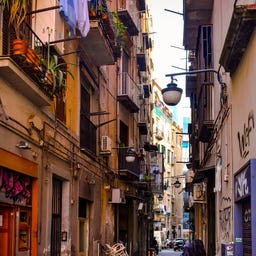
The historic center of Naples is a loud, chaotic maze of alleyways, baroque churches, and historic palaces. The main streets, Spaccanapoli and Via Toledo, are pulsing arteries where you can feel the true life of the city. The streets are filled with the aromas of Neapolitan street food like Pizza Margherita and Sfogliatella, freshly prepared at every corner.
As you dodge the mopeds, marvel at the unique nativity scenes on Via San Gregorio Armeno or buy a Cornicelli, a small red horn that serves as a lucky charm, as a souvenir. Here, you will also find the popular underground catacombs and several remarkable churches.
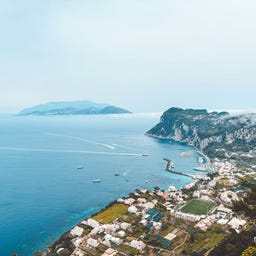
Capri, an island with fantastic panoramas, lies off the Sorrento Peninsula and is a popular destination for day trips. From Villa Jovis, one of Emperor Tiberius' residences, to the Blue Grotto, rediscovered in the 19th century, Capri offers several beautiful attractions.

The archaeological park near Agrigento is an outstanding example of ancient Greek architecture and a UNESCO World Heritage Site. The well-preserved Temple of Concordia, with its majestic Doric columns, stands out. Nearby, the Temple of Zeus Olympius is famous for its colossal Atlantes statues. A popular photo spot is the Statue of Icarus in front of the Temple of Concordia, symbolizing the mythological hero’s dramatic fall.
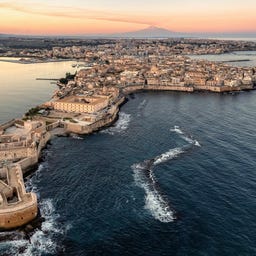
Ortygia, the historic heart of Syracuse, is one of Sicily's most beautiful gems. This enchanting island, connected to the mainland by two bridges, boasts a rich history spanning thousands of years, with ancient ruins, baroque splendor, and vibrant street markets.
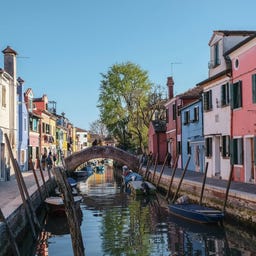
Murano is famous for its centuries-old glassmaking tradition. Visitors can watch the master glassblowers at work and admire unique artworks in numerous workshops. A visit to the Glass Museum is a must to learn about the history and production of Murano glass. Afterward, you'll view the souvenir pieces in the shops with newfound appreciation.
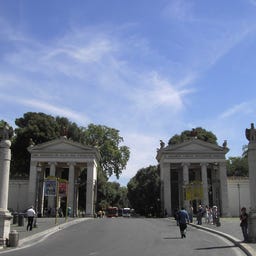
The Villa Borghese Gardens span about 80 hectares, offering not only attractions like the Galleria Borghese, a zoo, cinema (Casa del Cinema), and a replica of London's Globe Theatre, but above all, peace and relaxation from the hustle and bustle. If you need a break from the many sights and the noise of the city, come to the park with its small lake and the Temple of Aesculapius for a picnic or a boat ride. For children, there are playgrounds and the Bio Parco zoo.
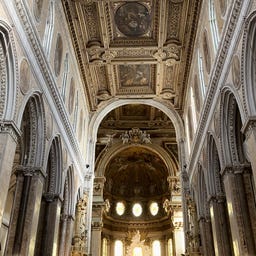
The Duomo di Napoli, also known as the Cattedrale di Santa Maria Assunta, is an outstanding example of Gothic, Baroque, and Neoclassical architecture. One of its highlights is the Royal Chapel of the Treasure of San Gennaro, adorned with exquisite Baroque decorations and frescoes.
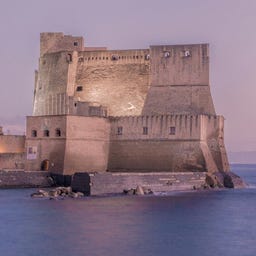
Built in the 12th century by the Normans, Castel dell'Ovo is the oldest fortress in Naples. Legend has it that the poet Virgil hid a magical egg in its foundations to protect the fortress. After destructions and rebuildings under the Angevins and Aragonese, the fortress now hosts events and exhibitions. Located on the small island of Megaride, it offers spectacular views over the Gulf of Naples from its towers and terraces.

The Matterhorn, with its majestic pyramid shape, is one of Europe's most iconic mountains, drawing adventurers and nature lovers alike. Straddling the border between Switzerland (Zermatt) and Italy (Breuil-Cervinia), it soars to an impressive 4,478 meters. Visitors can enjoy a variety of activities:

The Basilica di Santa Croce, located in the heart of Florence, is an impressive landmark and the largest Franciscan church in Italy. Known as the "Pantheon of Florence," it houses the tombs of famous figures such as Michelangelo, Galileo Galilei, and Machiavelli. The basilica's facade, a masterpiece of neo-Gothic style, is elegant and beautiful. Inside, you will find magnificent frescoes by Giotto depicting the life of Saint Francis, as well as Donatello's splendid "Deposition from the Cross."
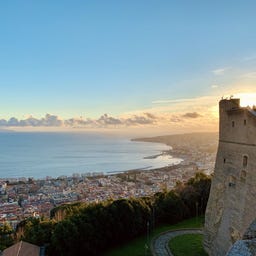
High above Naples on the Vomero Hill stands this impressive fortress from the 14th century. From its walls, one has the most beautiful panoramic views in Naples of Mount Etna, the picturesque bay, and the city. A highlight of any visit!
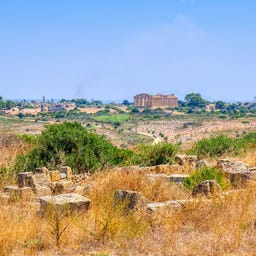
Located on the southwestern coast of Sicily, Selinunte is not only the largest archaeological park in Sicily but also the largest in Europe, spanning 270 hectares. Selinunte was founded in the 7th century BC and thrived until its destruction by the Carthaginians in 409 BC. The park is known for its extensive ruins, which include 7 temples built in the Greek Doric style. Of these, Temple E is the most restored and impressive, while Temple C, dedicated to Apollo, is the oldest, dating back to 560-550 BC.
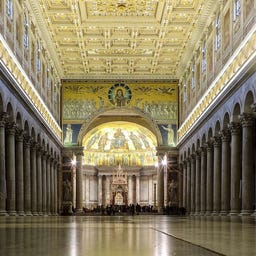
The Basilica of St. Paul Outside the Walls is one of Rome’s most significant pilgrimage sites, renowned for its immense size and spiritual importance. Located about 2 km south of the Aurelian Walls near the Tiber, this papal basilica was built over the tomb of the Apostle Paul.

The Scrovegni Chapel in Padua is a must-see for art and history lovers. Located in the heart of Padua, in Piazza Eremitani, this masterpiece is famous for its Giotto frescoes, painted between 1303 and 1305. These stunning murals, depicting scenes from the Old and New Testaments, are considered a groundbreaking moment in art history. Highlights such as the Last Judgment and the Cielo Stellato make the chapel truly exceptional.
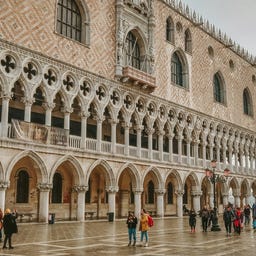
The Doge's Palace, a masterpiece of Venetian Gothic architecture built in 1340, served for centuries as the residence of the Doge and the center of political power in Venice. The palace's grandeur is evident in its magnificent halls, such as the Great Council Chamber, adorned with Tintoretto's "Il Paradiso," and the gold-encrusted Scala d'Oro, showcasing the Republic's former splendor.
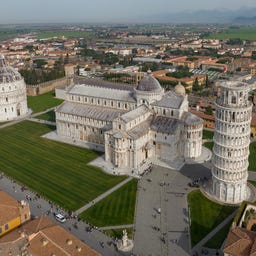
The Square of Miracles, or Piazza del Duomo, ranks among the world's most stunning plazas. Its centerpiece, the famous Leaning Tower, stands boldly beside the majestic Cathedral with its gleaming white marble facade.
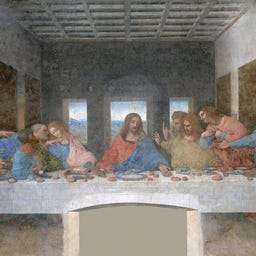
You’ll find Leonardo da Vinci's world-renowned painting "The Last Supper" at the Santa Maria delle Grazie Convent. The art work is located in the dining hall and depicts, in impressive detail, the moment Jesus reveals the betrayal that will lead to his death to his disciples. The expressive faces and masterful composition make it an unparalleled Renaissance masterpiece. It is the largest work of da Vinci, except the Sala delle Asse.
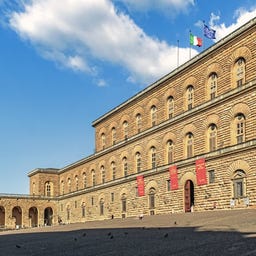
The Palazzo Pitti, just a stone's throw from the Ponte Vecchio, was once the residence of the Medici and now houses some of Florence’s most important museums.

The Teatro alla Scala is a temple of opera, where the greatest masterpieces of music history have been performed since 1778. Its magnificent neoclassical facade and opulent interior with red velvet seats are impressive. As one of the world's finest opera and ballet theaters, La Scala has hosted and thrilled the best singers and artists from around the globe. Experiencing a performance here is an unforgettable event.

When visiting Rome, you’ll inevitably come across Piazza Venezia, one of the city’s most busy squares. Dominated by the grand Vittoriano, a white marble monument honoring Italy’s first king, this square pulses with the energy of Rome.
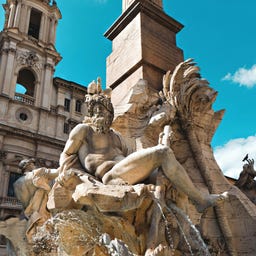
The Fontana dei Quattro Fiumi is a popular Roman landmark at the heart of Piazza Navona, one of the city's most renowned Baroque squares. Designed by Gian Lorenzo Bernini in the 17th century, it represents the four major rivers of the known world at the time: the Nile, Ganges, Rio de la Plata, and Danube.
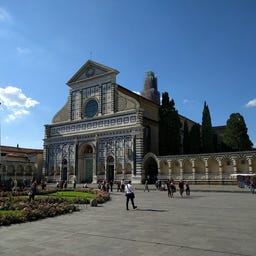
The Basilica di Santa Maria Novella is one of the most significant churches in Florence and a masterpiece of Gothic and Renaissance. It is located at Piazza Santa Maria Novella, directly opposite the train station of the same name. The magnificent facade, designed by Leon Battista Alberti, was completed in 1470. The complex includes the church, two cloisters, and several monastic buildings.

Napoli Sotterranea offers a fascinating journey into the underground right in the heart of Naples. This popular tour takes you through a labyrinth of ancient aqueducts, Roman tunnels from the 3rd century BC, and WWII air-raid shelters. A highlight is the Greco-Roman theater. Not for the claustrophobic —some passages are really narrow.
The tour lasts about 90 minutes and provides deep insights into the city's history. Tickets can be reserved online, and the meeting point is at Piazza San Gaetano.
Originally laid out by the Greeks, the Romans expanded the network into a complex aqueduct system. During World War II, these passages served as air-raid shelters.
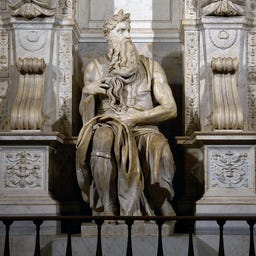
In the Roman Basilica of San Pietro in Vincoli, Michelangelo's famous marble sculpture of Moses stands tall - a 235 cm tall masterpiece at the center of Julius's tomb. You can immediately recognize the figure by its distinctive horns, which stem from a translation error of the Book of Exodus. Pay close attention to the intricately carved beard, so lifelike that it appears more painted than chiseled from stone. Some even claim to see hidden profiles of Pope Julius II and a woman in the beard.
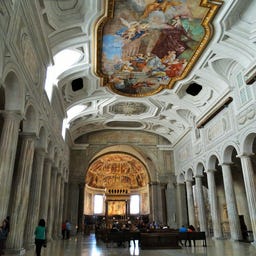
In the Basilica di San Pietro in Vincoli, you will find one of the most impressive Renaissance sculptures in Rome: Michelangelo's famous Moses, which adorns the tomb of Pope Julius II.
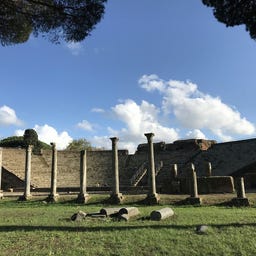
In the extensive ruins of Ostia Antica, the first Roman colony from the 7th century BC, you discover one of the best-preserved ancient cities in Italy.
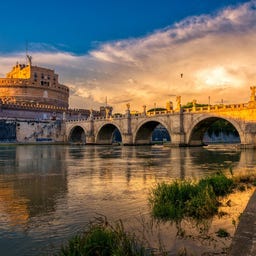
The Ponte Sant'Angelo, built in the 2nd century AD by Emperor Hadrian, leads directly to the imposing Castel Sant'Angelo, originally constructed as Hadrian's mausoleum. What makes the bridge truly special, though, are the 10 stunning Baroque angel statues, created by Gian Lorenzo Bernini and his pupils in the 17th century. Each statue holds a symbol of Christ's Passion—take a moment to admire the details.
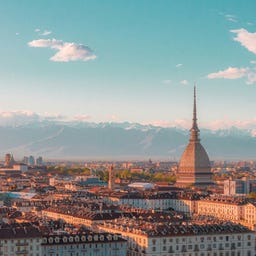
The Mole Antonelliana is undeniably Turin's most iconic landmark – a towering architectural masterpiece. Originally designed in 1863 by Alessandro Antonelli as a synagogue, it was later repurposed as a monument to Italian unity.

Right next to the Colosseum, the impressive Arch of Constantine rises, one of the best-preserved structures of its kind in ancient Rome. The 21-meter-high marble arch was built in 315 AD to celebrate Constantine's victory over Maxentius - a particular historical irony, as it immortalized a victory over fellow Romans.
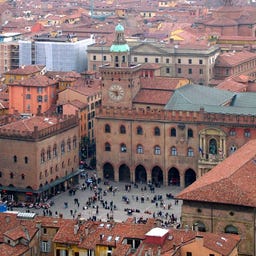
Piazza Maggiore, the heart of Bologna, is an essential stop on any visit. This lively square is surrounded by historic landmarks, including the Palazzo dei Banchi, the Palazzo del Podestà, and the magnificent Basilica of San Petronio. It's a favorite gathering spot for both tourists and students.

The Trajan's Column is a nearly 40-meter-high masterpiece of Roman sculpture from the 2nd century, depicting Trajan's victory over the Dacians in a unique relief band. The story of the campaign winds around the column, made of massive Carrara marble blocks, in 24 spirals, featuring over 2500 detailed figures.
